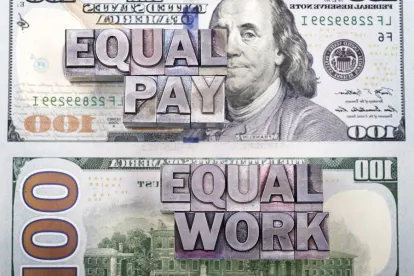State and local legislators have had another busy year with efforts to strengthen equal pay regulation, and there is no sign of a slowdown anytime soon. Legislation in this field began picking up in 2016 and continued to gain momentum throughout 2017. There were approximately 100 bills relating to equal pay introduced in the state legislatures this year in more than 40 jurisdictions. We expect this trend to continue as the closing of historical pay disparities between men and women and amongst other groups remains a policy priority.
Equal pay legislation has centered around three major areas. First, legislatures are acting to expand the scope and coverage of, and narrow the exceptions for, existing equal pay laws. For example, employers in certain states with amended equal pay laws must now provide equal pay not only for “equal” work, but also for “comparable” or “substantially similar” work. Some of these laws also effectively remove geographical distinctions and narrow other exceptions that employers may rely on. This year, Oregon and Puerto Rico added themselves to the list of states and territories (including Massachusetts, California, Delaware, and Maryland) that have made these sorts of changes, and California went a step further by expanding its equal pay act to cover race and ethnicity in addition to gender. Bills along these same lines for gender pay equality are also pending or expected in at least 15 additional states.
Second, legislatures are introducing salary history bans, which prohibit employers from asking applicants about prior compensation in the hiring process. These laws aim to stop the perpetuation of prior salary discrimination by increasing focus on the value that a recruit will bring to the position and reducing reliance upon compensation decisions made by others in the past when formulating job offers. Salary history inquiry bans were recently enacted in four states, including California, Delaware, Maine, and Oregon, along with Puerto Rico, New York City, Philadelphia, San Francisco, and Albany County (New York). Similar laws are pending in at least 13 additional states, and we expect that legislation will be reintroduced in several others during the next legislative sessions.
Finally, legislatures are acting to increase employer accountably for wages by proposing stronger pay transparency laws, which, among other things, would protect the open discussion of wages and—in at least one attempted effort thus far—would require employers to publicly disclose their wage differences between men and women. Currently, 17 states and Puerto Rico have laws governing pay transparency, although a number of these laws have been in place for some time. Recently, we have seen new or enhanced laws enacted on pay transparency in California, Colorado, Maryland, Massachusetts, Nevada, and New York, and several other states have pending legislation in this area as well. Thus far, California is the only state to have proposed a “wage shaming” law that would require larger employers to report gender wage differential information to the state for publication on a government website. The proposed law (A.B. 1209) passed the California Legislature in 2017 but was vetoed by the governor—the second consecutive year that he vetoed this type of proposed law. Similar legislation has been discussed in New York City as well.
Equal pay also saw some activity at the federal level in 2017. Representative Eleanor Holmes Norton introduced the Pay Equity for All Act of 2017 (H.R. 2418), a salary history ban law. She also introduced the Fair Pay Act of 2017 (H.R. 2095), which would lower the federal statutory standard from equal to comparable work, consistent with the state and local trend. While additional action has not been taken on these bills since they were introduced, it is likely that Rep. Norton will continue to pursue these efforts as she has in the past.
Also on the federal front, the EEOC has included “Ensuring equal pay protections for all workers” as one of its six top priorities for 2017-2021. And although the expanded EEO-1 form (including 12 pay bands for the reporting of employee pay by gender and race/ethnicity) was rejected earlier this year, EEOC Acting Chair Victoria Lipnic has stated that the EEOC remains committed to the enforcement of equal pay laws and that the decision to stay implementation of the expanded EEO-1 form does not alter this enforcement position.
As we move into 2018, employers should continue to focus on equal pay within their organization and get ahead of the curve on compliance, since the legislative momentum gained in 2017 will likely continue.






 />i
/>i
